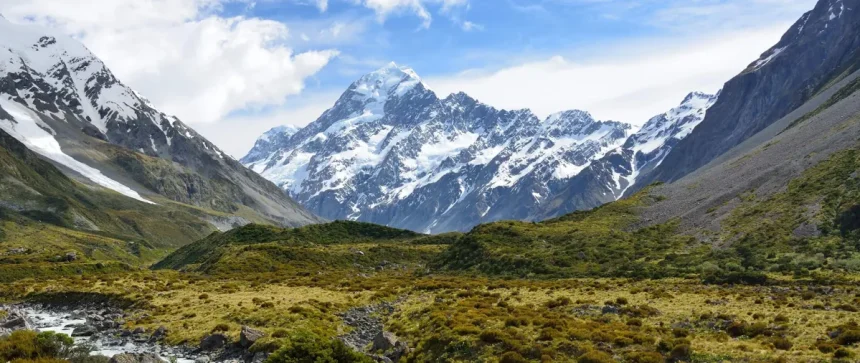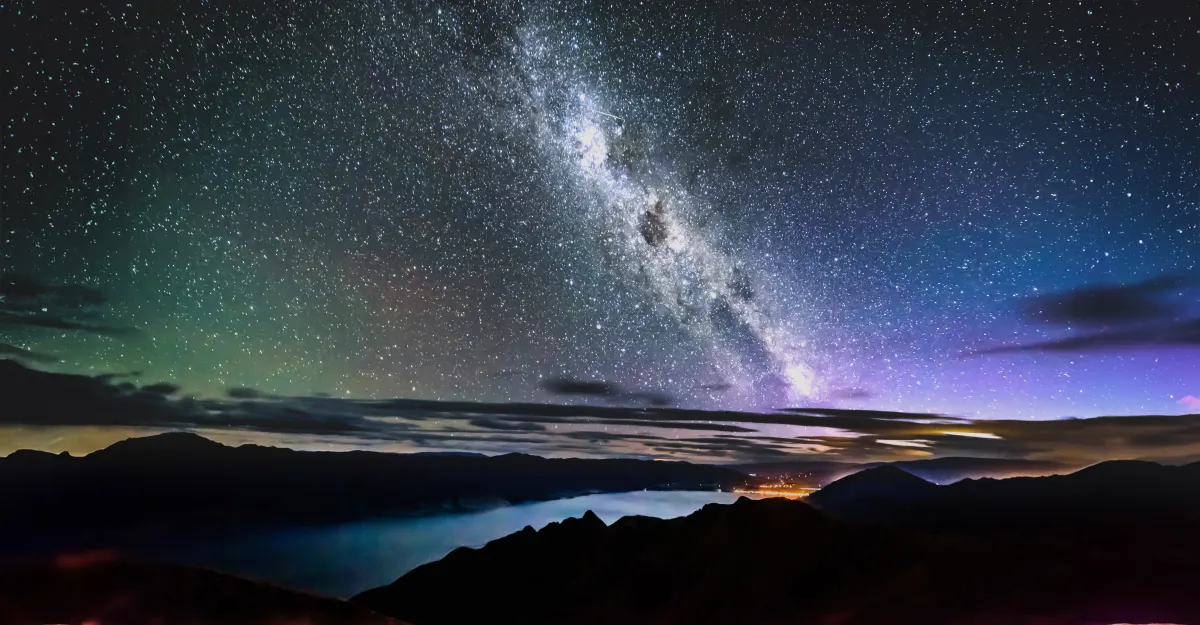Why Visit New Zealand A Snapshot of Aotearoas Charm
New Zealand, or Aotearoa as it’s known by the Māori, is a top destination for travelers craving stunning landscapes and unique cultural experiences. From sweeping coastlines and rugged mountains to vibrant cities and rich Māori heritage, this island nation offers a perfect mix for every kind of visitor.
What makes New Zealand stand out is its incredible natural beauty. Whether you’re exploring the geothermal wonders of Rotorua in the North Island or hiking through the dramatic fjords of the South Island, the scenery is unforgettable. It’s a place where adventure seekers can kayak, skydive, or ski, while nature lovers enjoy peaceful walks and wildlife spotting.
On top of that, New Zealand’s culture, especially its strong Māori roots, adds a deep, meaningful layer to your trip. You get to learn about traditional practices, enjoy indigenous art, and experience local hospitality firsthand.
For anyone looking to plan a New Zealand itinerary that blends adventure with culture and nature, this is a destination that delivers on all fronts. Whether you want to unwind or get your adrenaline pumping, Aotearoa has something special waiting for you.
Planning Your Trip Essential Logistics Visa and Entry Requirements Best Time to Visit Getting There
When planning your New Zealand trip, sorting out the essentials early makes everything smoother.
Visa and Entry Requirements
Most U.S. travelers need a New Zealand Electronic Travel Authority (NZeTA) before arrival. It’s quick to apply for online and usually approved within minutes to days. Make sure your passport is valid for at least three months beyond your planned departure date from New Zealand. Also, keep in mind customs rules, especially around food and outdoor gear, as NZ is strict about biosecurity.
Best Time to Visit
New Zealand’s peak travel season runs from December to February (summer), great for beaches and outdoor fun but expect crowds and higher prices. For fewer tourists and lower costs, consider shoulder seasons like spring (September to November) and fall (March to May). Winter (June to August) is perfect if you want to ski or enjoy snowy landscapes in the South Island.
Getting There
From the U.S., most flights land in Auckland, Wellington, or Christchurch. Direct flights from West Coast hubs like Los Angeles or San Francisco take about 12-13 hours. Booking tickets well in advance often locks in better rates—especially if you’re eyeing summer travel. Keep an eye out for deals and be flexible with dates. Once you arrive, you’re ready to dive into your New Zealand itinerary.
Getting Around New Zealand
Renting a Car or Campervan
One of the best ways to explore New Zealand is by renting a car or campervan. It gives you the freedom to follow your own New Zealand itinerary, stop whenever you want, and dive deep into those hidden gems off the beaten path. Keep in mind:
- Roads can be narrow and winding, especially in rural areas.
- Drive on the left side of the road.
- Campervan travel NZ is popular and practical for both accommodation and transport.
- Book your vehicle early during peak travel seasons to avoid higher prices or limited options.
Public Transport and Hitchhiking
Public transport is limited outside major cities, but buses connect most towns on both islands. It’s a budget-friendly choice if you’re not in a rush, but can be slow and inflexible.
Hitchhiking is still common and generally safe in New Zealand, especially in touristy regions. Use common sense: look for busy spots, get a sense of the driver, and always trust your instincts.
Inter-Island Travel
To get from the North Island to the South Island (or vice versa), ferries are your best option. The popular ferry runs between Wellington and Picton, offering a scenic crossing through the Marlborough Sounds.
If you’re pressed for time, consider a domestic flight between major cities like Auckland, Wellington, Christchurch, and Queenstown. Flights are quick but usually more expensive than the ferry.
Combining these transport methods is the best way to experience New Zealand’s diverse landscapes, from vibrant cities to stunning nature spots on both islands.
Budgeting for Your New Zealand Trip Daily Costs Money-Saving Tips
New Zealand can feel a bit pricey, but with some planning, you can keep your budget in check. Here’s a quick look at daily costs and how to save money while exploring Aotearoa.
Daily Costs to Expect
- Accommodation: Hostels cost around $25-$40 per night, budget hotels or motels run $70-$120, and mid-range hotels are $150 or more.
- Food: Grocery shopping and cooking your own meals is the cheapest option, roughly $10-$15 a day. Eating out can cost $15-$30 per meal at casual restaurants.
- Transportation: Renting a car or campervan varies based on season and type but expect $40-$100 per day plus gas. Public transport tickets range from a few dollars up to $20 for longer trips.
- Activities: Many hiking trails and parks are free, but paid attractions like adventure sports or guided tours can run anywhere from $50 to several hundred dollars.
Smart Money-Saving Tips
- Cook Your Own Meals: Stay in hostels or campervans with kitchen access to reduce daily food costs.
- Use Public Transport or Hitchhike: Save on rental costs by using local buses or even hitchhiking where it’s safe and common.
- Book Early for Rentals and Attractions: Lock in better rates by planning and booking ahead, especially in high season.
- Travel Off-Peak: Avoid the summer peak (December-February) when prices spike for everything from flights to accommodation.
- Free Activities: Take advantage of New Zealand’s stunning free outdoor options like national parks, beaches, and walking trails.
- Discount Cards and Passes: Look for multi-attraction passes or transport shuttle cards to get the best deals.
Carefully budgeting daily expenses and using these tips will help you enjoy your New Zealand itinerary without breaking the bank.
Cultural Tips and Māori Heritage
When traveling New Zealand, understanding Māori culture is key to getting the full Aotearoa experience. The Māori are the indigenous people of New Zealand, and their traditions and stories are deeply woven into the country’s identity.
Here are a few cultural tips to keep in mind:
- Respect the land and people: Māori culture values respect for the environment and community. Always ask permission before entering a marae (Māori meeting house) or taking photos of people.
- Learn basic Māori greetings: Simple phrases like “Kia ora” (hello) and “Haere mai” (welcome) go a long way in showing respect.
- Take part in a cultural experience: Many places offer chances to see traditional haka performances, try Māori cuisine, or join guided tours led by Māori hosts.
- Follow local protocols: When visiting sacred sites, follow rules carefully, as these places hold significant spiritual meaning.
- Support Māori businesses: Consider buying crafts, art, or experiences from Māori artisans and tour operators to help preserve their culture.
Getting to know Māori culture isn’t just interesting—it enriches your whole New Zealand itinerary by connecting you to the real heart of Aotearoa.
Must-Visit Destinations and Activities North Island Highlights South Island Highlights Adventure and Nature
When planning your New Zealand itinerary, it’s important to balance both islands’ unique offerings. The North Island is rich in culture and geothermal wonders. Don’t miss Rotorua for its bubbling mud pools and Māori cultural experiences. Wellington, the capital, offers vibrant food scenes and museums like Te Papa. For beautiful beaches and hiking, check out the Coromandel Peninsula and Tongariro National Park, where you can tackle the famous Tongariro Alpine Crossing.
The South Island stands out for its stunning landscapes and outdoor adventures. Explore Queenstown, the adventure capital of NZ, perfect for bungee jumping, jet boating, and more. Fiordland National Park and Milford Sound offer breathtaking fjords and scenic cruises that shouldn’t be skipped. In Mount Cook National Park, you can hike among New Zealand’s highest peaks. The West Coast features wild beaches and the famous Franz Josef and Fox Glaciers.
For nature lovers and thrill seekers, New Zealand is a playground. Consider these activities:
- Hiking or tramping on well-marked trails
- Kayaking in pristine lakes and fjords
- Wildlife spotting, including dolphins, penguins, and seals
- Camping or campervan travel NZ to fully soak in the outdoors
- Adventure sports in Queenstown and elsewhere
Whether you’re into cultural sights or breathtaking natural beauty, New Zealand offers unforgettable experiences for every traveler.
Safety and Practical Tips
Traveling around New Zealand is generally safe, but it pays to be prepared. Here’s what you need to know to stay safe and enjoy your trip.
Weather and Outdoor Safety
New Zealand’s weather can change fast, especially if you’re hiking or exploring remote areas.
- Always check the local weather forecast before heading out.
- Dress in layers and carry rain gear, even on sunny days.
- Stick to marked trails and let someone know your plans if you’re hiking or camping.
- If you’re going on a New Zealand road trip, watch for sudden weather shifts that can make roads slippery or reduce visibility.
Biosecurity Rules
New Zealand takes biosecurity very seriously to protect its unique environment. Before you travel:
- Don’t bring fresh fruit, plants, or soil with you.
- Clean your shoes, camping gear, and outdoor equipment to avoid bringing in pests.
- Declare any food or outdoor gear at customs.
Natural Disaster Preparedness
Earthquakes and occasional volcanic activity can happen in New Zealand.
- Know emergency exits and evacuation routes where you’re staying.
- Keep essential items (water, first aid, phone charger) handy.
- Follow local authorities’ advice if an emergency happens.
General Safety
- New Zealand is among the safest countries, but always use common sense.
- Avoid isolated areas at night, especially in cities.
- Keep valuables secure and be cautious with your belongings.
- If renting a campervan or car, make sure your vehicle is in good condition and you’re familiar with local driving laws.
Following these simple safety tips will help you enjoy your Aotearoa travel guide experience without any hassles.
Packing Essentials for New Zealand
Packing smart is key for a smooth New Zealand trip. The weather can change fast, so layering is your best friend. Here’s what I recommend bringing for your Aotearoa travel guide:
- Clothing: Pack lightweight layers like T-shirts, long-sleeve shirts, and a warm fleece or sweater. Don’t forget a waterproof jacket—rain can show up anytime, especially if you’re doing a New Zealand road trip.
- Footwear: Sturdy walking shoes or hiking boots are a must for exploring both North Island highlights and South Island attractions. A pair of comfortable sandals or sneakers works well for city days.
- Accessories: Sunglasses and a broad-brimmed hat help protect you from the strong UV rays. Sunscreen is a must, even on cloudy days.
- Tech and Gear: Bring a universal power adapter, a camera or smartphone with plenty of storage for photos, and a portable charger. If you’re renting a campervan, pack a reusable water bottle and a small flashlight.
- Outdoor Essentials: If you plan adventure activities, add swimwear, quick-dry towels, and insect repellent. For hiking, carry a daypack with snacks, a map or GPS app, and a refillable water bottle.
- Travel Documents: Always have your passport, visa (if required), travel insurance, and copies of important documents saved digitally and on paper.
Being prepared takes the stress out of the trip and lets you focus on the amazing experiences ahead. Keep your pack light but versatile to make the most of your budget travel New Zealand adventure.
Auras Final Tips for a Memorable Trip
To wrap up your New Zealand travel tips, here are some simple but key pointers for an unforgettable trip to Aotearoa:
- Stay flexible with your itinerary. New Zealand’s weather and road conditions can change fast, so having some wiggle room will help you enjoy the trip without stress.
- Respect local customs and the environment. Learn a few Māori phrases, stay on marked trails, and follow biosecurity rules to protect wildlife — it makes a big difference.
- Pack smart and travel light. Focus on layering clothes for all weather and bring essentials like insect repellent and a reusable water bottle.
- Try campervan travel NZ style. It’s one of the best ways to explore at your own pace while saving on accommodation.
- Keep an eye on your budget. Use local markets, free attractions, and public transport to stretch your travel dollars.
- Stay safe and informed. Check weather updates, prepare for outdoor activities properly, and always have emergency contacts handy.
For more practical travel hacks and lifestyle inspiration, you can also check out Travel Tip Tuesday — it’s packed with useful advice for smooth, hassle-free trips.
Keep these tips in mind, and your New Zealand adventure will be not just memorable but truly enjoyable. Safe travels!










